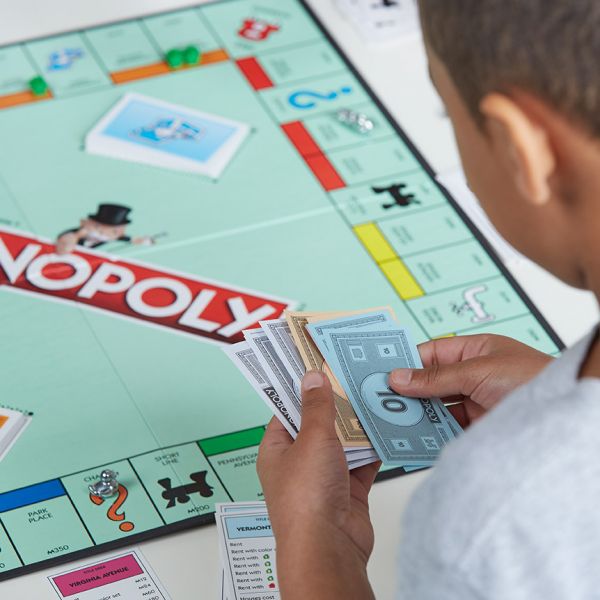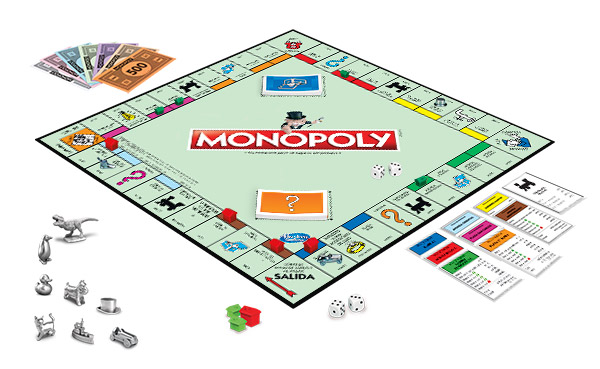These 25 Facts About Monopoly Might Surprise You

I'll be honest: Monopoly hasn't hit my table in at least 10 years. Yet it remains in my game collection as one of my must-own games. I, along with millions of others have many memories of playing the game as a child, which mostly was instrumental in teaching me what it felt like to lose miserably to my older and smarter siblings. Nowadays, I am much more interested in playing newer, fresher, more appealing titles — but I also respect the past and plan to teach Monopoly to my children so they can take part in the tradition when they are ready to learn it.
When Parker Brothers began selling the game in 1935, it quickly became a cultural phenomenon. Today, over 1 billion people have played the game in one form or another. As Hasbro celebrates Monopoly's 83rd birthday today — "World Monopoly Day" — let's take a moment to reminisce and perhaps discover some lesser-known facts about this iconic game (special thanks to Hasbro for providing content for our use — my commentary is in bold italics).

25 Things You Didn’t Know About Monopoly
- The MONOPOLY brand’s official birthday is March 19, 1935 when Parker Brothers acquired the rights for the game from Charles Darrow.
- The MONOPOLY game is currently published in over 47 languages and sold in over 114 countries.
- Charles Darrow of Philadelphia, PA first developed the MONOPOLY game in 1933. (Before game design was cool.)
- The MONOPOLY game is based on Atlantic City, N.J., U.S.A
- The original game was made from materials from Darrow’s own home. A piece of oilcloth covered the board and the cards were handwritten.
- The original houses and hotels were made from wooden molding scraps.
- The original MONOPOLY die-cast tokens were inspired by Darrow’s nieces who recommended metal charms from charm bracelets be used. (They're magically delicious!)
- The original game included 10 metal tokens including iron, purse, lantern, racecar, thimble, shoe, top hat, battleship, cannon and a rocking horse. (I would love to see an "original edition" printed, to include these first token shapes. A nice collector's item.)
- Darrow attempted to sell the MONOPOLY game to Parker Brothers, but was initially rejected for "52 fundamental errors" that included the game’s length, theme and complexity. (This one is especially interesting to me. I can point out my own problems with the game all day, and apparently so could Parker Brothers.)
- Darrow first manufactured and sold the MONOPOLY game in local Philadelphia department stores.
- Following the local success of the MONOPOLY game, Parker Brothers reconsidered their initial rejection and negotiated the rights to market the game. (Who cares if it has errors? The people are buying it!)
- Parkers Brothers in the U.S.A. and Waddington’s in the U.K. began manufacturing and selling the MONOPOLY game in 1935.
- Within a year of the MONOPOLY game’s release in the U.S., 35,000 copies of the game were being made each week.
- The original MONOPOLY game sold for about $2. (Which is equivalent to $36.67 in today's economy.)
- The current standard MONOPOLY game includes eight tokens: battleship, top hat, Scottie dog, racecar, cat, T-Rex, rubber ducky, and penguin.
- The three most-landed-on properties in the standard MONOPOLY game are Illinois Avenue, “GO” and B&O Railroad.
- The total amount of money in a standard MONOPOLY game is $20,580. (Unless you have kids. Then this number drops to around $357 inside the box — the rest is who-knows-where.)
- The MONOPOLY game is sold in over 100,000 retail stores. (People are STILL buying this game in droves.)
- On record, the longest game of MONOPOLY ever played lasted 70 straight days. (Case in point. See #9.)
- Under The Boardwalk: The MONOPOLY Story, a documentary about the MONOPOLY game, debuted in 2010 and won an Emmy® award.
- In a recent study of approximately 2,000 people, nearly 50 percent of respondents reported some form of cheating during MONOPOLY gameplay, including stealing money from the bank, moving a token across multiple spaces, making up fake rules, and more. (Can you blame them? It's all an attempt to speed up the game.)
- This year, Hasbro launched a way to solve the game’s cheating and questionable behavior once and for all with the introduction of MONOPOLY CheatBot, an adaptation of Facebook Messenger.
- In the fall of 2018, to give fans what they’ve been craving all along, the MONOPOLY brand is introducing the MONOPOLY CHEATERS EDITION game, where players will be encouraged to bend the rules and “cheat to win."
- The Official MONOPOLY brand Facebook page has over 10.7 million Facebook fans.
- MONOPOLY Facebook fans hail from over 40 different countries.

Conclusion
Game design has come a long way since Monopoly originally hit the market. A game like this would never fly nowadays, yet it was a new and compelling idea for it's time. And no one can deny Monopoly's impact on the world, mostly for the better. Any time we sit together at a table we are bound to create bonds and memories that will last us a lifetime.
Monopoly should certainly be a part of your collection, but if you're ready to branch out and try something new, there are a ton of great options to choose from. You can read about the best new board games in Casual Game Insider or check out our list of Recommended Games. Whatever games you choose, just be sure to play — and play often.





Please don't spread the made up version of history. The real history of Monopoly is far more interesting.
Charles Darrow didn't develop Monopoly. The game was invented and patented in 1904 by a woman named Elizabeth Magie. The game was published by the Economic Game Company. Between 1904 and 1935 the most common way people obtained the game was on versions of the board they made themselves (after learning the game from someone else), usually without having any form of written rules. In 1933, Charles Darrow took the version of the board developed by a family of Quakers (who had recently moved from Atlantic City and made their board based off of that city), had them write down their rules for the game, had a cartoonist friend of his come up with some art for the game so that it wasn't all text, and tried to sell the game to Milton Bradley and Parker Brothers (both of whom rejected it). When Parker Brothers started to feel the pains of the Great Depression, then they agreed to publish the game.
The true history of Monopoly came to light when an economics professor at San Francisco State University named Ralph Anspach created a game called Anti-Monopoly in the early 1970s. Parker Brothers threatened to sue him over the game. In retaliation, Anspach made the case that Parker Brothers had no legal grounds to sue him because neither Parker Brothers nor Charles Darrow held the patent on Monopoly (only the Trademark on the title itself).
Interesting Fact: "Marvin Gardens" is misspelled on every Monopoly board. At the time, "Marven Gardens" was a housing development in Atlantic City in Margate and Ventnor.
Glad you commented on this, Dave. Parker Brothers has been propagating myths about the game since they began publishing it.
The whole sordid tale is told in Mary Pilon's book "The Monopolists" which is definitely worth a read.